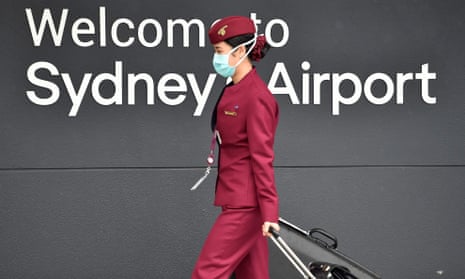Covid-19 remains widespread globally and it is unlikely to ever be eradicated. Few countries have not had extensive community spread. Even countries with previous good control, such as Taiwan, South Korea, Japan and Vietnam, are seeing increasing numbers of cases.
We remain fortunate that in most of Australia we have not seen much community spread. By global standards, we still have only had a small proportion of our population infected.
But Australia’s success in controlling the spread also means there is only a small proportion of our population with immunity to Covid-19 because of infection. This is in stark contrast to many other countries where infection rates have likely involved more than 20% of the population.
Vaccination is critical for protection. Once we have a large proportion of the adult population vaccinated, we will need to adopt a different attitude to what risks we are willing to accept if we want to re-engage with the rest of the world. Any changes will be gradual and will need a risk-based approach to keep transmission of Covid in Australia as low as is reasonable, compared with the social and economic cost of those restrictions.
We have been very effective in Australia at controlling Covid-19 and its spread. But this has left us in somewhat of a “Covid-19 limbo” compared with countries that had uncontrolled spread but now have high rates of vaccination. These countries seem to have the view that they will not eliminate Covid-19 and accept some spread within their communities.
I suspect that after we vaccinate a large proportion of our adult population, we will come to the same viewpoint. Otherwise we will need to become a hermit nation with very limited numbers travelling to and from Australia for the next four or five years – or even longer.
The reality is that we are eventually going to have to accept Covid-19 circulating in our community.
A major hurdle currently to opening borders is many seem to expect that near-zero transmission of Covid-19 within Australia will be continued indefinitely. This is not likely to be feasible if we want to interact with the rest of the world.
We will only be able to reconnect with the global community if we are willing to accept that Covid will become endemic and so spread, like many other respiratory viruses, especially in winter. Unfortunately, even with high levels of vaccination, Covid-19 will cause some serious infections and deaths.
But we need to remember also that this is what happens each year in winter, with influenza and many other common viruses.
I think we will likely gradually open our international borders, starting from later this year.
Travel between countries with minimal or no Covid-19 transmission such as New Zealand will continue and then potentially extend to Singapore and the Pacific region. What we designate as low-transmission countries will be dependent on good surveillance in those countries for Covid-19, plus our ability to independently check all arrivals for their Covid status by testing and ancillary evidence from testing sewage from planes arriving in Australia after long-haul flights.
Quarantine of some description will likely be with us for some time. People returning from high-prevalence countries, especially if they are not vaccinated, will need to continue to spend two weeks in supervised quarantine facilities.
However, people coming from low-prevalence countries and who are vaccinated should be able to quarantine at home for a period (maybe only a few days) while awaiting a negative PCR Covid-19 result. Those vaccinated but coming from countries with low to moderate transmission of Covid may need to be at home in quarantine for a longer period of time – some possibly still needing 14 days.
In any non-immune population, Covid will spread rapidly if there are not restrictions in place to decrease the risk of spread (eg indoor crowd numbers) and on returning travellers. It is therefore essential we have high levels of immunity in Australia before we can open our borders. Vaccination will give people immunity, but to have a high level of protection for our entire population, we will likely need 70% or more of adults fully vaccinated.
Currently in Australia more than 5 million people have received at least one dose of a Covid vaccine. We should now be able to vaccinate at least 1 million people per week, as about 1 million doses of the AstraZeneca vaccine are produced weekly in Melbourne and another 200,000 doses or more, of the Pfizer vaccine imported per week.
If more vaccine supplies arrive, then in a few months’ time we could potentially increase our vaccine uptake further, and maybe deliver 2 million doses per week.
By the end of September we should have another 12 million doses administered, well over 15 million adults should have been vaccinated – and with a sizeable proportion having received their second dose.
By the end of this year, most adults should have received their second vaccine dose.
However, we need to also remember that large-scale vaccination for children will likely be delayed until well into 2022 as we need large studies to be completed which show both safety and efficacy in their age groups.
But no vaccines are 100% effective. While our current vaccines appear to be very effective at preventing death and serious disease, they do not prevent all infections, particularly mild infections.
Even when vaccinated, people can still transmit infections to others. But if a large proportion of the population is vaccinated – especially in nearly all those older than 70 – not only will we see less spread, but the consequences of that spread will be much less severe.
Peter Collignon is an infectious diseases physician and microbiologist at the Australian National University
